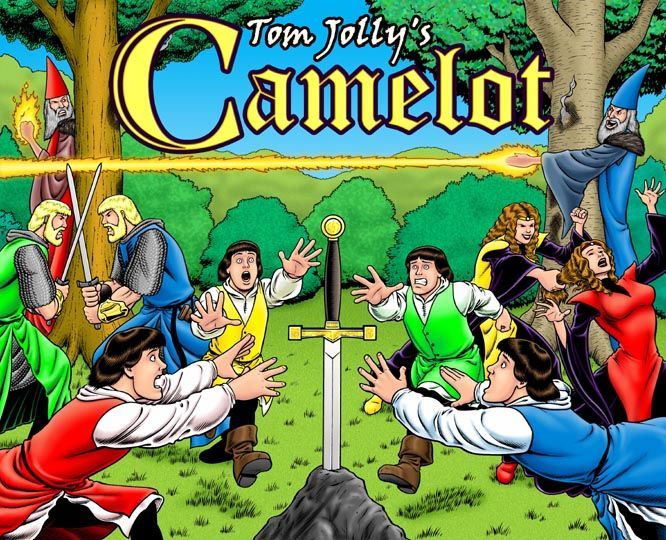Camelot (2005) Board Game
Camelot is a board game that was released in in 2005. It is designed by Tom Jolly and published by Wingnut Games. The game is set in the mythical realm of King Arthur’s court, where players take on the roles of knights of the Round Table. The game features real-time gameplay and simultaneous action selection, making it a fast-paced and dynamic experience for players.
Game Components of Camelot
How To Setup Camelot
To set up the game, each player selects a knight and receives the corresponding character card and player board. The game board is placed centrally, with the various quest boards and spaces prepared. The black card deck and white card deck are shuffled, and each player starts with a set of white cards. Siege engines are placed on the board as indicated by the initial setup rules.
Gameplay Mechanics and Game Objective
Player Experience
Playing **Shadows Over Camelot** involves a mix of cooperation and deduction. Players must work together to complete quests and defend Camelot while also suspecting and potentially accusing a hidden traitor among them. The game is tense, especially as siege engines accumulate and options become more limited. The hidden traitor mechanic adds a layer of paranoia and social deduction, making each game unique.
Pros
Cons
Personal Thoughts on Camelot
**Shadows Over Camelot** is ideal for fans of cooperative and semi-cooperative games who enjoy social deduction and hidden traitor mechanics. It’s a great introduction to these genres due to its accessible rules and engaging gameplay. However, the game may not appeal to those who prefer more thematic consistency or more open-ended gameplay options, especially towards the end of the game. Overall, it’s a classic game that still offers a unique and thrilling experience, even nearly two decades after its release.
We are supported by our audience. When you purchase through links on our site, we may earn an affiliate commission, at no extra cost for you. Learn more.

